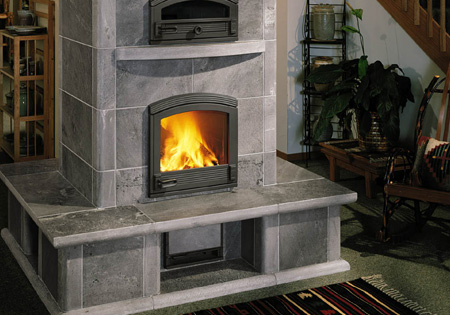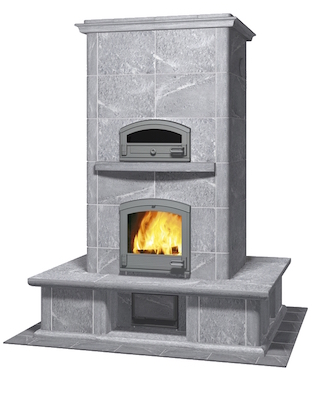Wood Energy
Many homeowners are turning to wood for heating their homes as an alternative to the high energy and environmental costs of traditional home heating fuels such as oil, gas, and coal-powered electricity. But using wood for heating can be a bit of a mixed bag from an environmental standpoint. In a conventional fireplace, burning wood generates more air pollution per Btu than any other fuel source.When wood is burned, lots of particulates (unburned sulfur dioxide, carbon monoxide, and hydrocarbons, otherwise known as smoke) are released, which are extremely harmful when breathed in. Many areas ban wood heating for precisely this reason. The burning of wood also releases lots of cdarbon dioxide, a potent climate changing gas.
Wood IS a Renewable Resource
With all of these downsides, wood heat is considered a renewable source of energy, as the source trees are typically grown and harvested locally and sustainably. And though burning wood does release carbon dioxide, a growing tree stores more carbon dioxide than is relesed during wood burning, so if the tree is sustainably-sourced, wood heating can be considered to be carbon neutral. And renewable.
Clean Burning is the Key to Wood Energy
Burning wood in inefficient fireplaces or wood stoves, or burning improperly treated wood, leads to excessive smoke pollution and the loss of most of the heat right up the chimney. Taking a few simple steps will create a much cleaner, much more efficient system of wood heating that minimizes particulate pollution.
- Choose the Right Wood: Hardwoods usually have a higher Btu value and fewer resins tahn softer woods. This results in hotter burning, cleaner burning fires.
- Wood Must Be Dry: Wood needs to be thoroughly dried and cured before burning to ensure the cleanest combustion. Burning wood with moisture in it, even a little, results in much more smoke and particulate matter being released, and much lower heat output.
- Use Efficient Fireplace or Wood Stove: An efficient wood stove or fireplace is critical for minimizing smoke pollution and increasing heat efficiency. In a traditional fireplace, almost all of the fire's heat goes right up the chimney. More efficient types of wood burners are wood stoves, pellet stoves, or masonry heaters. The most efficient wood stoves have catalytic combustors that use a catalyst that burns up a lot of the unburned particulates before they escape up the chimney.
Even cleaner and more efficient than fireplaces or wood stoves are pellet stoves and masonry heaters. Pellet stoves burn small processed wood pellets (often made from wood scraps) and have electric blowers to pump extra air into the stove, which results in a more complete and clean fire. The downside? Pellets can be more expensive than cut wood, and most pellet stoves require electricity and won't work in a power outage.
Masonry heaters don't use electric blowers, but rely on natural airflow to burn at a much higher temperature than traditional fireplaces or stoves. Masonry heaters burn a very small amount of wood at a very high temperature, 1500 degrees or more, which releases much less pollution. The masonry mass of these types of stoves, also know as tilikuvi stoves, absorbs this heat, then radiates it into the home gradually and slowly. In addition to the cleaner burn, masonry heaters also typically require less wood, since it uses the wood's energy so much more efficiently. A well-insulated home with a masonry heater may only need one or two small fires a day.
A drawback to a masonry or tilikuvi heater is their cost; a well-designed heater can cost over $5,000 .
Water Heating with Wood
Most people use wood energy to heat their homes, but wood heat can also be used to heat the home's water. For a true green, off-grid home, the complicated plumbing needed for fitting a wood stove with a heat exchanger for water heating can be worth the effort. Wood heated water makes a good combination with solar water heating; when the sun can't adequately heat the home's water, the wood stove can pick up the slack.
Where to Burn
There are some physical locations where wood heating isn't the best choice, for either environmental or financial reasons. In areas that experience atmospheric conditions known as inversions, usually valleys, air pollution from wood fires is trapped, leading to increased health risks.
Urban areas with limited access to locally-grown wood, and with more concentrated housing, are also typically not the best areas for wood heating. Rural areas, with lots of renewable hardwoods and limited access to gas or electricity lines, wood heating is a more viable option.
comments powered by Disqus




























































































































































































